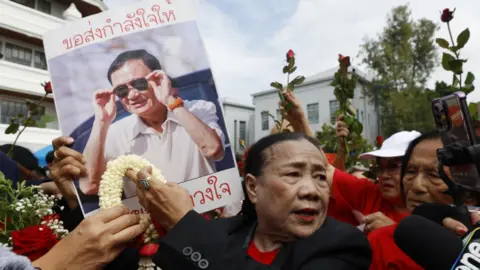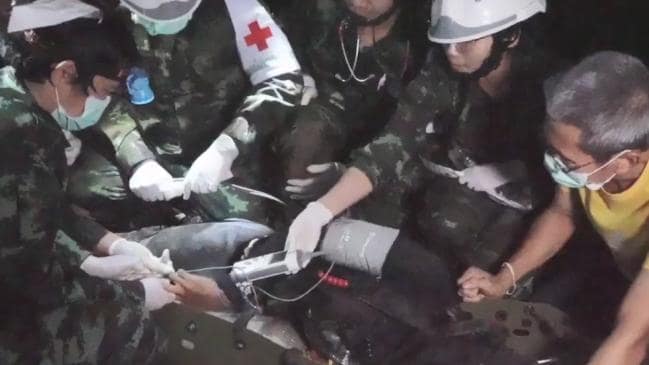
This article is more than
7 year old
People the world over sat on the edge of their seats as the meticulous plan to rescue the trapped Thai cave soccer team was carried out.
Now new details from the doctors involved reveal just what went into the captivating mission in June last year.
Until now there had been reports the boys were drugged with ketamine and handcuffed on their journey out of the cave.
In his book, The Cave, released earlier this year, ABC Australia Southeast Asia correspondent Liam Cochrane revealed the boys received far stronger drugs than the “mild sedation” reported and were handcuffed behind their backs to stop them ripping off their face masks should they wake up.
But in a letter published in The New England Journal of Medicine today, the team involved, including Aussie dive hero Richard Harris, detail exactly what went down.
“Inefficient” co-ordination of the first few boys taken out led to a successful new treatment plan that’s now being applauded by doctors across the world.

With impending monsoon rains and concerns about falling oxygen levels in the cave, the plan involved ketamine-based anaesthesia and a face mask supplying 80 per cent oxygen.
After the boys swam out of the cave wearing poorly fitting wetsuits in cold water, the field hospital received the first four.
Sunglasses were put on for their eye protection, and they were warmed with blankets.
The second boy rescued had a body temperature of 35C when he was transferred to the helicopter for the trip from the field hospital to Chiangrai Prachanukroh Hospital, but “unanticipated hypothermia” where his body temperature dropped to 34.8C developed on the way.
“The after-action review on day one identified hypothermia and inefficient team co-ordination as the critical components, and the Thailand Cave Rescue Protocol, which addressed airway, breathing, circulation, and hypothermia management was developed,” the doctors wrote.
The team changed the way they monitored the boys’ temperatures, taking them every five minutes until a temperature of 35C was observed for at least four readings.
undefinedThey said ketamine was good for small drops in core temperature because it impaired shivering.
In people with hypothermia, shivering can harm metabolism and brain function

Ketamine is also known in the party scene as “Special K” for the sensation it provides.
The doctors warn how “adequate external and internal rewarming techniques are essential” in treating hypothermia.
“A cloth blanket, heater blanket and whole-body foil wrap plus a forced-air warming device were used,” they said.
When the next patients were transferred, a clear handover was provided with instructions to focus on the airway, breathing, circulation and hypothermia management protocol.
“Our experience shows the successful pre-hospital medical care of a series of anaesthetised patients with hypothermia after a submerged cave rescue,” they conclude.
Doctors around the world have commended their efforts and treatment.

Dr Jeffrey Apfelbaum, a University of Chicago anaesthesiologist, told the Los Angeles Times
he was awed by the medical aspects of the rescue.
“The skill set necessary to get these kids out is just unbelievable,” he said.
“There are countless ways, both medical and from a diving perspective, where tragedy could have occurred. By no means was any of this straightforward.”
US emergency medicine expert Dr Robert Glatter said the team should be applauded for safely and successfully preparing the young patients in a difficult and challenging scenario.
